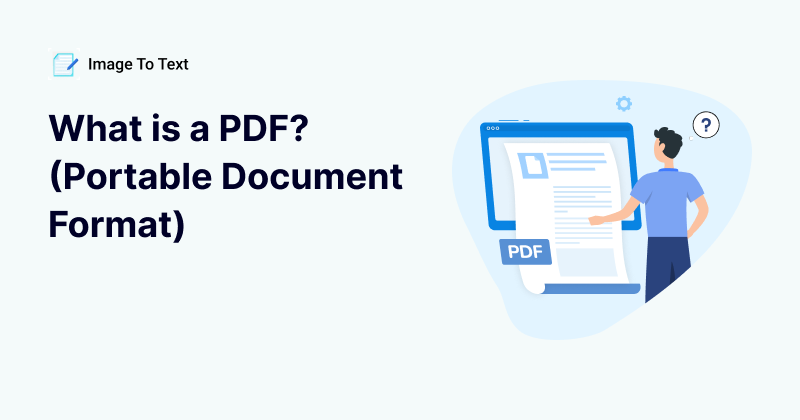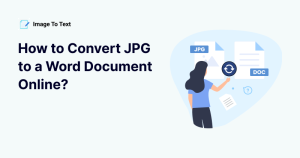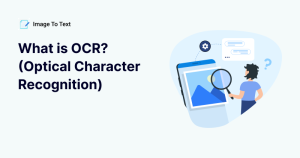What is a PDF?
PDF stands for portable document format. It was introduced in 1993 by Adobe as a means to provide people with an easy way to exchange graphics in documents.
PDFs keep textual formatting and layout intact for files across all types of software, hardware, and operating systems. Because of this unique capability, the document format has become a standard of file-sharing for the past two decades.
In today’s post, we will review the definition, history, and benefits of using PDFs in day-to-day tasks. We will also take a look at potential problems and challenges associated with the said format, and how we can resolve them.
A Brief History of PDF
In 1991, Adobe’s co-founder John Warnock wrote “The Camelot Project.” This paper was made with a vision to create a universal file format for document sharing and processing purposes.
Later, in 1993, PDF 1.0 came into inception. As time went by, Adobe started adding more features to its document format. People could easily convert images to PDF, add hyperlinks in text, attach videos, and much more.
After nearly a decade, PDF/A-1 became the standard for the long-term archiving of e-documents (ISO 19005-1). This allowed organizations and businesses to make digital libraries and databases for record-keeping, making information easily accessible.
Since 2005, PDF has kept receiving ISO updates. In 2008 it became an open standard which encouraged a lot of online tools and alternatives to pop on the internet.
Then, in 2017, the International Organization for Standardization (ISO) implemented an update to improve accessibility and digital rights management concerning fair usage and other legalities.
However, regardless of the updates it got, the truth is that the adoption of PDF as the universal file format was a slow and smooth transition.
Experts have ranging opinions on this matter as to why this was the case. The most popular viewpoint is that Dr. John Warnock was truly ahead of his time with the concept of PDFs. The world, with internet use on the rise, started to catch up with PDFs in the early 2000s.
Where is PDF Used?
Today, there are many scenarios and use cases in real life where PDFs reign supreme and help the workflow for organizations and individuals. Some of these are discussed below.
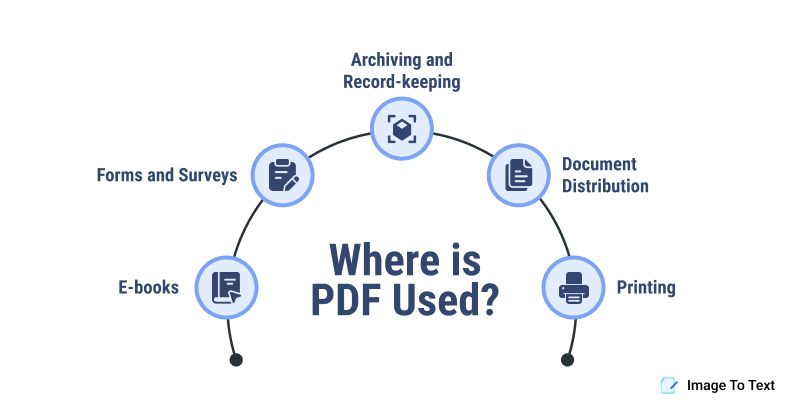
1. Document Distribution
Nowadays, PDFs are most commonly used for distributing documents digitally or over the internet. Examples of files may include business reports, academic papers, legal contracts, etc.
2. E-books
Portable document format provides format and layout consistency, providing a standardized way of presenting graphical and textual content. This is why E-books, manuals, guides, etc., are usually made in PDF.
3. Forms and Surveys
PDFs are great for creating interactive forms and surveys. Users can easily fill up and save their information in the file without breaking the structure of the document. Common scenarios include E-applications, feedback forms, customer surveys, etc.
4. Archiving and Record-keeping
A certain subset of the file format (more on that later) is usually used for archiving and digital record-keeping. Such PDFs never lose their appearance even when they’re left over a significant period.
5. Printing
PDFs can be formatted to printer-compatible formats, enabling a streamlined workflow for PR agencies, content creators, and many more industries.
Types of PDF
There are mainly five different types of PDF Standard subsets: PDF/A, PDF/X, PDF/E, PDF/VT, and PDF/UA. Each carries unique benefits to meet the demands of different industries and individuals.
PDF/A
Unlike the PDF standard, the PDF/A format doesn’t allow components in the document that can wear over time. This means no interactive elements like JavaScript, audio, video, and executables can carry into the file if they’re not embedded.
PDF/X
PDF/X is another subset of the PDF standard, which is made to be printer-friendly. It restricts the type of content a file can carry so that printing can be done more reliably and accurately.
PDF/X eliminates the uncertainties associated with color interpretation in printing by prompting the user to pre-define all colors in color spaces like CYMK or spot colors.
PDF/E
Tailored to the engineering industries, this type of portable document format allows you to carry complex data like 3D models, schematics, and more. PDF/E can also contain CAD files and enhanced metadata, something that wasn’t possible with the PDF Standard.
PDF/VT
Released in August 2010, PDF/VT is a widely used document format for modern printing needs. It is quite similar to PDF/X in terms of features but adds more customizable options to handle a wide range of graphical and visual data.
PDF/VT provides more flexibility and efficiency in managing customized printing jobs. That’s why it is used by businesses to personalize invoices, billings, marketing materials, advertisements, and more.
PDF/UA
PDF/UA ensures inclusive use for everyone, especially for those who require the use of assistive technology. The file format works on tagged PDF Files that allow easy access of material to the specially-abled.
The PDF/UA subset also comes with powerful navigation buttons with built-in TTS (Text-to-Speech) functionality to further elevate accessibility.
Why to Use PDF?
Ever since it came into inception, the .pdf extension has been popular to see significant improvements in terms of security and integrity of data. Today, you can reap the following perks using a PDF file:
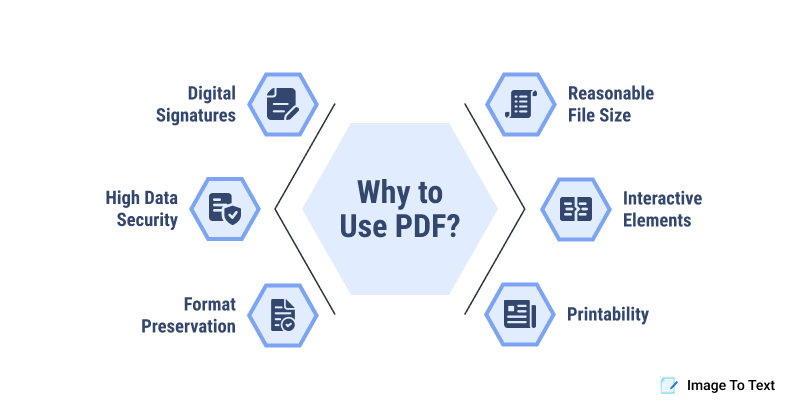
- Digital Signatures: With PDFs, you can digitally sign (or e-sign) your documents to provide certifications or show compliance with legal contracts.
- High Data Security: You can put passwords to PDFs to keep the integrity of academic documents or creative work, securing it from modification or theft.
- Printability: PDF/X and PDF/VT provide excellent graphic exchange, printability, and publication features for users.
- Reasonable File Size: E-books, manuals, etc., with hundreds of pages, can be comprised into a single PDF file without occupying a lot of disk storage.
- Interactive Elements: Add elements like JavaScript, forms, and visual content. This adds to the appeal and engagement of your crafts.
- Format Preservation: A PDF is great for keeping the layout and structure of a document the same, regardless of the device used for viewing.
Possible Downsides?
Despite all the benefits we highlighted in the previous section, there are some downsides to PDFs, too. Because the format is too secure and behind layers of format and structure protection, it is sometimes difficult to edit the contained content or extract key data.
This is especially true for people who use PDF Reader, which does not provide built-in OCR capabilities like the other paid options from Acrobat.
Besides that, there have been cases where people put passwords to their PDFs and forgot them later on. This adds to the frustration of the user as they cannot get their work done on time and access content when they need it the most.
Reviewing such downsides naturally prompts one to scram for solutions. But, thankfully, you won’t need to go anywhere else as we will now review some solutions to the discussed challenges.
Solutions to the Faced Challenges
There are solutions to the said problems, and that too, for free. First and foremost, you can easily leverage the free online image to text converter to extract data from any type of PDF file.
The OCR technology in the said tool will keep your workflow streamlined and smooth without getting into any frustrating procedures.
You can also implement the PDF to text converter for your daily tasks to make PDF content available for updating, editing, and storing purposes.
However, remember that this solution is suitable if you’ve accidentally forgotten or set password protection or encryption to your documents.
If you are not the file author and don’t have permission to edit or access a document. Then, it is better to consult the creator first before doing anything else.
Final Thoughts
PDF is a file format that allows easy document exchange between different types of devices while preserving formatting. The PDF format has evolved with ISO updates, ensuring open standards and improved features like accessibility and digital rights management.
PDFs come in various subsets such as PDF/A, PDF/X, PDF/E, PDF/VT, and PDF/UA to cater to diverse industry and individual needs.
However, despite its advantages, challenges like editing restrictions and forgotten passwords may arise, necessitating solutions like online converters for extracting and updating data efficiently.
